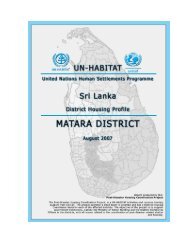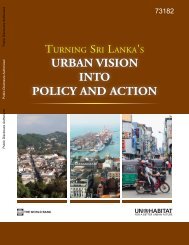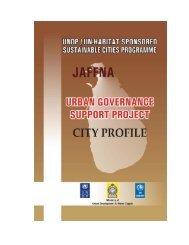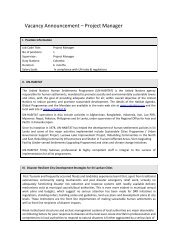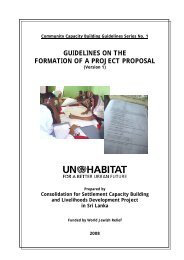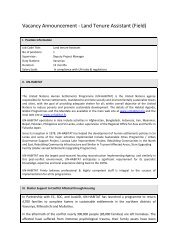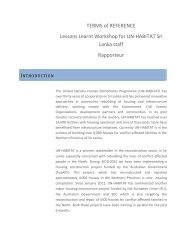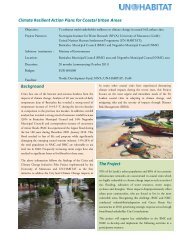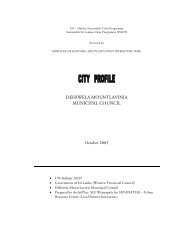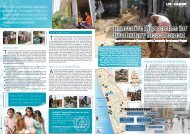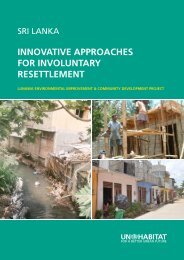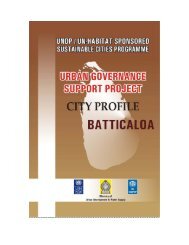Conference Proceedings : âJANASEVANAâ National ... - UN HABITAT
Conference Proceedings : âJANASEVANAâ National ... - UN HABITAT
Conference Proceedings : âJANASEVANAâ National ... - UN HABITAT
Create successful ePaper yourself
Turn your PDF publications into a flip-book with our unique Google optimized e-Paper software.
ank promotes financial inclusion and build proof documents through savings. At the same time, the HDFC bank<br />
promotes savings and savings habits. The low penetration by banks is considered an opportunity to reach more<br />
customers by the HDFC.<br />
HDFC Mobile banking in operation in Colombo<br />
The main market for HDFC Bank is in the urban sector, with over 100,000 customers in Colombo. The majority of the<br />
customers are daily wage labourers working in the local authorities, fish markets and vegetable markets. Other<br />
customers include pavement hawkers, small shop keepers, fishermen, carpenters and shop assistants.<br />
HDFC has identified several key lessons from these banking initiatives. It was found that the low‐income target groups<br />
thus identified earn a good income and silently make a major contribution to the economy. However their Income is<br />
not adequately managed and they are uncomfortable with obtaining credit and have minimal financial literacy,<br />
although they are good paymasters. Therefore, tapping into this “unspoilt” market provides new opportunities for<br />
banks to enter the low‐middle income sector.<br />
Sustainability of a <strong>National</strong> Policy for Housing in Emerging Economy<br />
Professor Ashu Marasinghe<br />
Chairman, State Engineering Corporation<br />
Professor Ashu Marasinghe, discussing Sri Lanka’s <strong>National</strong> Strategy on housing, mentioned that it is important to look<br />
at a housing model which gives priority to developing villages and rural areas rather than centering development in<br />
cities. He also stressed the need to adopt “home‐grown solutions” to housing problems in Sri Lanka.<br />
Discussing the history of Sri Lanka’s <strong>National</strong> Housing Programmes, Prof. Marasinghe mentioned that since 1979, the<br />
NHDA had built approximately 78,000 housing units – thereby housing 150,000 families in Colombo. He also discussed<br />
the global mandate and tagline of <strong>UN</strong>‐<strong>HABITAT</strong> ‐ the United Nations agency for human settlements ‐“Promoting<br />
sustainable urban development”. He stated that <strong>UN</strong>‐<strong>HABITAT</strong> has an urban‐centred model judging by the taglines of<br />
the past decade which deals mostly with cities and urban areas and questioned whether an urban‐centred model was<br />
right for Sri Lanka, as nearly 80% of the population live in rural areas.<br />
<strong>Conference</strong> <strong>Proceedings</strong> – <strong>National</strong> Housing Symposium 23



